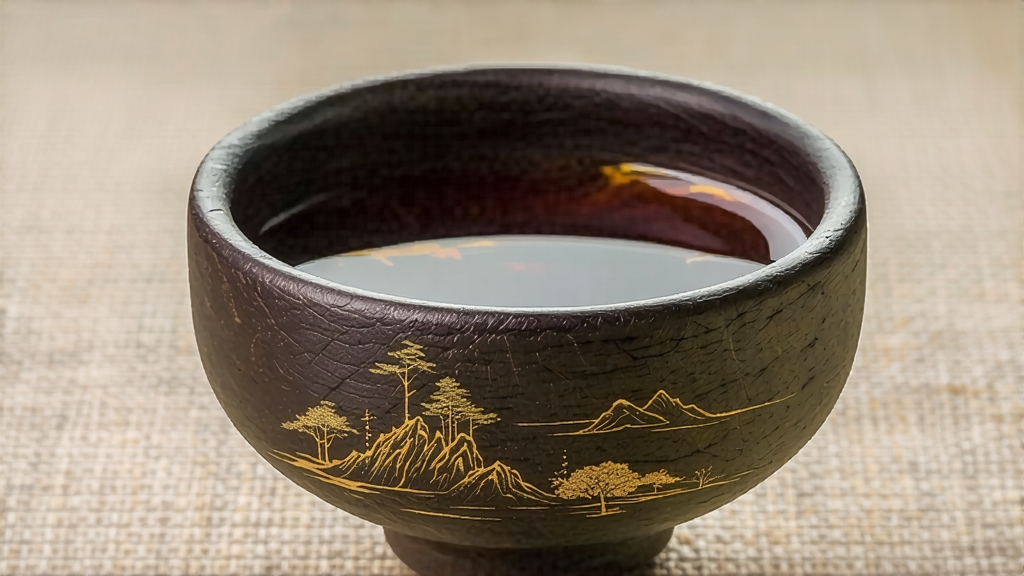
If one were to listen to southern China with a cup in hand, Phoenix Dancong would sing the clearest melody. Hailing from the fog-draped Phoenix Mountain range in eastern Guangdong, this oolong is not a single cultivar but a fragrant family of over eighty genetically distinct “fragrance-types,” each named after the flower or fruit it evokes—honey-orchid, almond, ginger flower, night-blooming jasmine, even bitter orange. Yet all share a common ancestor: the centuries-old Shui Xian mother tree that still stands sentinel at an altitude of 1,100 m on Wudong Peak. Local chronicles credit the Song dynasty (960-1279) imperial court with first recognizing the tea’s “mountain charm,” and by the Ming era it was tribute tea carried by porters over the Meiling Pass to Beijing, wrapped in bamboo and banana leaves to preserve its perfume. Today the village chiefs of Fenghuang (Phoenix) Town protect groves of 200- to 600-year-old tea trees, issuing micro-batch harvest certificates that read like deeds to liquid heritage.
Botanically, Phoenix Dancong belongs to the Camellia sinensis var. sinensis species, yet centuries of sexual reproduction on isolated cliffs have created a living library of aromas. Farmers identify each tree by its natural bouquet, then vegetatively propagate it under the same name, resulting in what botanists call “clonal fragrance lines.” The most prestigious come from Wudong’s granitic slopes where diurnal temperature swings exceed 10 °C and mist refracts sunlight into a soft, silver diffusion ideal for slow aroma synthesis.
Making Phoenix Dancong is choreography of fire, wind and muscle. Picking begins at dawn when two leaves and a bud still hold the night’s chill; anything plucked after 10 a.m. is deemed too “yang” and will flatten the cup. The leaves are sun-withered on bamboo screens for twenty minutes—just long enough for the edges to curl like parchment—then moved indoors for “touch green,” a gentle tossing in deep wicker trays that bruises the margins and jump-starts oxidation. This step is repeated six to eight times across the night, each round softer than the last, coaxing the leaf to breathe without panting. At 3 a.m., when the mountain air smells of orchards and charcoal, the master halts oxidation at 30-40 % by passing the leaves through a 230 °C drum roaster for ninety seconds; the sudden heat locks in the signature “mountain honey” note. What follows is unique among oolongs: a second, slow charcoal roasting that can last twelve hours. Using lychee-wood embers buried in ash, the tea baker hand-turns the leaf every twenty minutes, allowing the invisible smoke to season rather than mask. The process is repeated two to three times over the next forty-five days, with resting intervals that let residual moisture migrate outward. The result is a leaf that looks obsidian yet smells like candied apricot—an alchemy of Maillard sugars and terpene florals impossible to replicate with electric ovens.
To brew Phoenix Dancong authentically, one must borrow the Chaozhou gongfu mindset: small vessels, big heart. A 100 ml white porcelain gaiwan, three grams of leaf, and water just off the boil (95-98 °C) form the trinity. The first infusion is a three-second “awakening rinse,” discarded not for cleanliness but to prime the leaf’s memory. Subsequent steeps cascade: 5, 10, 15, 25, 40, 60 seconds, then two minutes, each pour arcing low to preserve aroma. The liquor runs from pale chrysanthemum to deep topaz, always crystalline. On the tongue it enters like silk, then blooms into a three-act opera: top notes of orchid and ripe lychee, a mid-palate of baked sweet potato and warm honey, and a mineral finish that echoes the granite cliffs—what locals call yanyun, the “rock rhyme.” A single serving can yield twelve infusions; the seventh is often the most haunting, when floral volatiles have thinned and the cup tastes like mountain spring water remembering flowers.
Professional cupping follows a quieter ritual. Five grams in a 110 ml porcelain tasting set, 100 °C water, five-minute first steep. The wet leaf is lifted